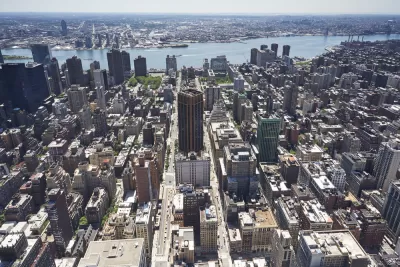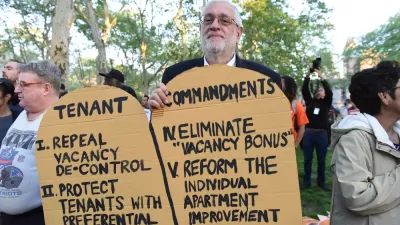Technology is changing the game of real estate in New York City. The technology behind the revolution, called proptech, is only going to become more critical as cities respond to climate change.

Looking for an explanation of the power of "proptech," technology designed to disrupt the real estate industry? Then look no further than New York City, where Crain's New York Business reporter Greg David shows how one real estate company is already putting proptech to work.
David starts the exploration with the example of NANTUM, a cloud-based operating system developed by the Rudin Management Company. Rudin has even created a subsidiary called Prescriptive Data to develop proptech. Examples of NANTUM at work include property managers responding to citywide mandates for temperature regulation across the entire Rudin portfolio, or using the technology to respond to power spikes after a power outage.
Despite the successes of the companies already in the proptech space, the number of traditional real estate companies pushing into proptech "can be counted on one hand," according to David.
New regulations might push NANTUM into the next level of scalability, according to David. "Nantum's biggest opportunity may come from the tough climate-change law passed by the City Council this year requiring a 40% reduction in large building emissions by 2030 and an initial cut by 2024." Proptech will become a necessity in the kind of regulatory environment established by laws like New York's new climate change law, according to sources cited in the article.
The article includes more details about the origins of NANTUM (the 2009 Obama stimulus package) and its partnerships with Con Edison, the utility in New York City.
FULL STORY: Rudin's proptech firm is not your typical startup

Planetizen Federal Action Tracker
A weekly monitor of how Trump’s orders and actions are impacting planners and planning in America.

Maui's Vacation Rental Debate Turns Ugly
Verbal attacks, misinformation campaigns and fistfights plague a high-stakes debate to convert thousands of vacation rentals into long-term housing.

San Francisco Suspends Traffic Calming Amidst Record Deaths
Citing “a challenging fiscal landscape,” the city will cease the program on the heels of 42 traffic deaths, including 24 pedestrians.

Defunct Pittsburgh Power Plant to Become Residential Tower
A decommissioned steam heat plant will be redeveloped into almost 100 affordable housing units.

Trump Prompts Restructuring of Transportation Research Board in “Unprecedented Overreach”
The TRB has eliminated more than half of its committees including those focused on climate, equity, and cities.

Amtrak Rolls Out New Orleans to Alabama “Mardi Gras” Train
The new service will operate morning and evening departures between Mobile and New Orleans.
Urban Design for Planners 1: Software Tools
This six-course series explores essential urban design concepts using open source software and equips planners with the tools they need to participate fully in the urban design process.
Planning for Universal Design
Learn the tools for implementing Universal Design in planning regulations.
Heyer Gruel & Associates PA
JM Goldson LLC
Custer County Colorado
City of Camden Redevelopment Agency
City of Astoria
Transportation Research & Education Center (TREC) at Portland State University
Jefferson Parish Government
Camden Redevelopment Agency
City of Claremont





























